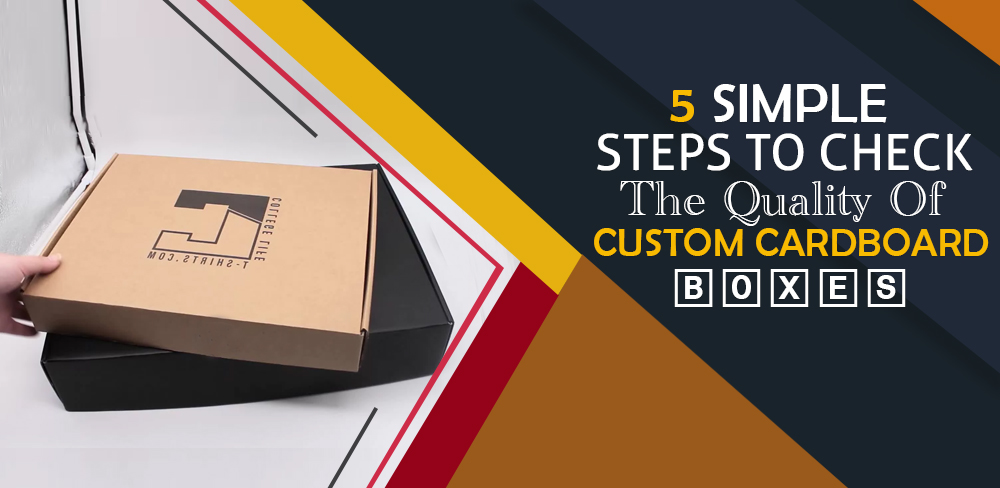Custom cardboard boxes with acceptable aesthetic value are a great prospect to develop solid first impressions with your products. Exceptional aesthetics is not all a packaging should have because other design aspects are observed. The quality of the boxes, including the structural sturdiness and durability, should be spot-on. After all, they have to pass through severe climatic conditions during the shipping process. Low-quality means that they cannot propose sound product protection that translates into lesser sales. Before using these boxes, you need to check on their quality to see if they can withstand shipping calamities or not.
Perform cardboard boxes material tests:
The first-ever step in determining the quality of cardboard packaging is to perform the material bursting test. This test estimates the resistance of cardboard to withhold its original posture without buckling. Although it is a challenging process, it can assist you with the perfect estimation of packaging strength. The process starts with applying critical loads and sensitive pressures at a part of the box. Next, make sure that the applied load is concentrated and consistent to find a realistic value.
You should repeat the test ten times to gauge the true strength of the box to deal with physical stressors during transit. You can apply the pressure on the top side five times and equivalent times on the right side of the box. Tear in the box structure, and it is good to go. The packaging failing under this burst strength test needs to be reinforced to maintain optimal quality.
Check for the moisture cardboard boxes level:
When using cardboard boxes for shipping, exposure to various humidity levels is indispensable. The constant exposure may result in the internal moisture within the cardboard that affects its strength by a great deal. Use a moisture meter to measure the same moisture levels within the cardboard box. As per the studies of experts, a moisture level lower than 25% is safer. The lower the moisture level, the better the box’s strength. If it contains more moisture content than this value, it needs to be dried up for a specific time. The moisture build-up is not just because of the humidity in the environment. Several processes during packaging manufacturing also lead to moisture, like printing and gluing. Therefore, if the boxes have less moisture content within, they can be a safe option for shipping your products.
Seamless edge crush test:
Another valuable tool in gauging the quality of custom cardboard boxes is the edge crush test. In this process, the vulnerable parts of the boxes, i.e., edges and corners, are crushed against a force. This process is vital because the edges and corners of the packages determine how solid they are to bear specific weights. The cardboard material is placed upright between the machines and compressed at specific pressures in this meaningful test. The strength results are measured in pounds per inch, commonly described as ECT rating. If the rating is 32 or above, the packages are sturdy enough to carry products of different weights. Usually, the boxes of such strength can withstand a weight up to 65 pounds with no deformity in the design. Make sure to reinforce your packages with an additional cardboard layer if their edges and corners break easily.
Special vibration test:
Although cardboard packaging can carry a weight that is several times its weight, it may fail due to vibrations. This is because it has to pass through various bumpy roads that may result in its collision with the truck’s walls. This produces vibrations in its overall structure resulting in its ultimate breakage. If you are to determine whether your box is high-quality or not, make sure to perform a particular vibration test. Every box has its frequency, which is called its natural frequency. Use frequency sweeps to vary the frequency from a lower to higher value and place the box on a table. If the sweeping vibration matches the box’s frequency, the table will still become. This will result in a “resonance” phenomenon, and the box would be subjected to an instant breakage. Therefore, this test is beneficial in assessing its ultimate quality.
Execute box compression strength:
The subjection of cardboard packages to stacking and compression is expected. On their way to delivery, they are regularly exposed to these situations. To measure their quality in the best way, use compression testing machines. They perfectly estimate the stacking and compression strength, thus, giving a hint at the rate of packages. This process is similar to the edge crush test, with the only difference that pressure is applied diagonally opposite to the edges. The boxes get compressed between two adjacent rollers here. If the packages are resistant to bulging or distortion in shape, they are higher quality.
When using custom cardboard boxes for retail matters, it is pertinent to ensure they are high-quality. Any compromise on the quality aspect can cause product damage that leads to bad first impressions on the potential clients. Therefore, keep a check on their quality by subjecting them to different tests so as to analyze their properties and features. A precise estimation lets you decide if the packages are good to go or you need to strengthen them further.

